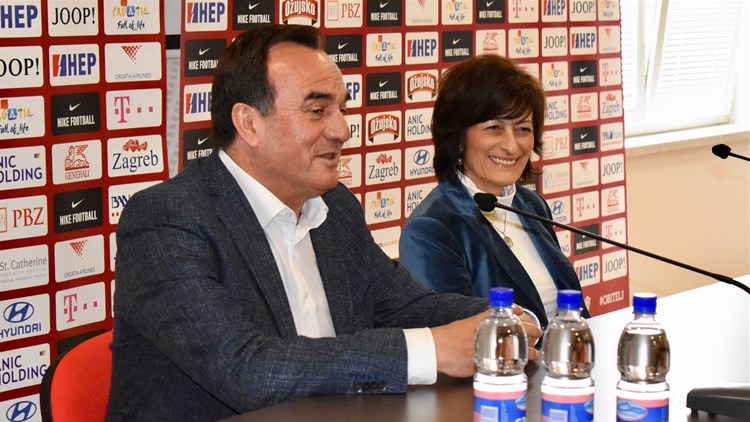The press conference was opened by HNS's head of international affairs and licensing Ivančica Sudac and HNS vice-president and VAR project leader Ante Kulušić.
"Today we are here for the third VAR seminar in Croatia, and each of these seminars is held strictly in accordance with IFAB's protocol. The equipment you see today will soon be used at Croatian stadia. The process of introducing VAR is long and laborious, and every referee has to go through a set number of video clips and matches before they can use the VAR technology. However, when you look at how much VAR can do for Croatian football and how much it's already done for football on a global level, no process is too difficult for us. I hope we will manage to introduce VAR by the spring part of the next competitive season. The most important thing is to minimize mistakes, but it's important to remember that the referee on the pitch is still making the final call, and the technology is here to help him take a closer look at important situations," said Kulušić.

foto: Dražen Patarčić/HNS
VAR introduction was financed with help from the FIFA Forward Programme, and the process of initiating the project was explained in more detail by head of international affairs and licensing Ivančica Sudac:
"Introducing VAR is part of HNS's strategy for the 2018-2022 timeframe. We began planning this project when we learned that FIFA had decided to use VAR at the 2018 World Cup. The first steps to introducing VAR were taken in spring of 2018. After that, we followed the necessary guidelines and presented our business plan in order to apply for funding from FIFA Forward, which helps member associations realize their business and football development projects. We're currently in the execution phase of the VAR project and are following the strict protocol set by FIFA and IFAB, as well as collaborating with the television rightholders for the Croatian First Division and our technical partner Croatel. HNS is the first in our region to introduce VAR, in part because every match of the Croatian First Division is televised - and VAR is only useful when matches are filmed with a large enough number of cameras, which means that some situations can be seen more clearly on-screen than from the pitch. We will only start using VAR once IFAB confirms that the infrastructure, the technology, and the referees who will use it are all fully ready."
Sudac also explained that Croatia will not have one central room for VAR. Instead, each stadium will have a designated room in order to minimize the possibility of signal and network issues.

foto: Dražen Patarčić/HNS
After the introductory press conference, IFAB technical director, English referee and arguably the world's foremost VAR expert David Elleray held a lecture on the technology.
"The media are very important for this project, as journalists can help the public understand what VAR can do, both also what it cannot and must not do. I am glad to be here on behalf of IFAB and to be a part of this important moment in Croatian football. Before VAR is introduced, each competition must obtain permission from FIFA and IFAB. HNS has been fully following the schedule for VAR introduction, and they also have high quality instructors and administrative support," said Elleray of Croatia's progress on introducing VAR.
Elleray also explained the main prinicples behind VAR:
"VAR is the fastest revolution in modern football. IFAB approved video replays to be used for the first time in a match in 2016, and in 2018 it was already being used at the most important match in the world. Our guiding thought for VAR is: minimum interference, maximum benefit. The goal of VAR is to stop clear and obvious mistakes and to call attention to serious missed incidents. VAR can be used in four match-changing moments: goals, penalties, red cards or missed red cards, as well as situations of mistaken identity."
After his class, VAR instructors Bruno Marić and his assistant Tomislav Šetka showed reporters what kind of equipment will be used by VARs, as well as giving further examples of VAR usage.

foto: Dražen Patarčić/HNS





